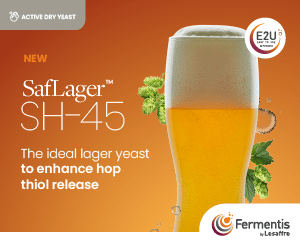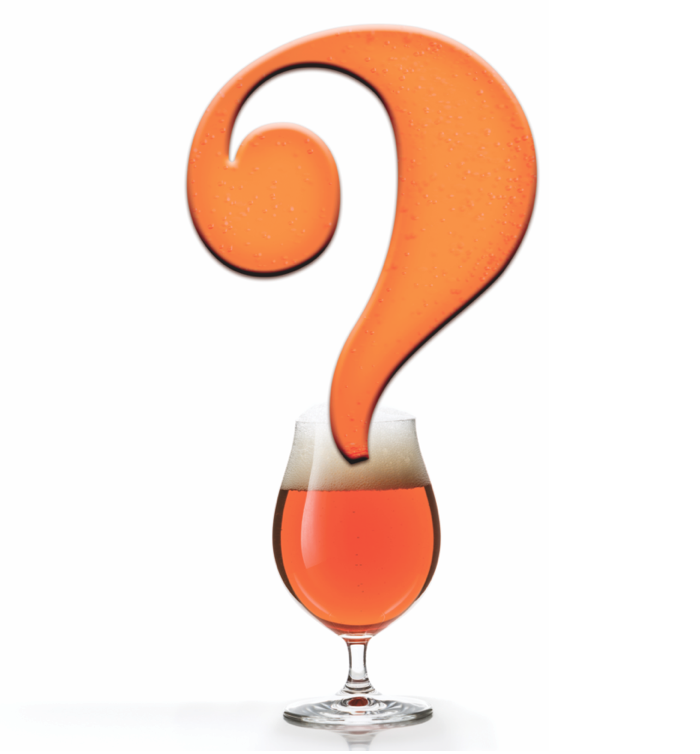Maximizing Your Pressure-Rated Conical
Q: I’ve just bought a 20-L (5.25-gallon) conical bottom, pressure fermenter and I am keen to try it out. I primarily brew all-grain lagers with the odd ale and do so in 10-L (2.6-gallon) batches using carboys. I like variety in my beer and so keep batches small. My questions are: 1) At what fermenting temperature and for how long? Because of our hot climate I will still need to ferment in a cooled environment during our summers. 2) Is the hopping rate the same for pressure fermenting as for atmospheric fermenting? Please consider that I also hot cube (No-Chill Method) the beer prior to fermenting — Can’t afford to waste water in Australia. 3) What is the best way to dry hop a pressure-fermented brew? 4) How long will I need to lager the beer?
— Terry Le Lievre • Warragul, Victoria, Australia
A: Thanks for the question from down under, Terry! Although the fermenter you describe is pressure rated and has a conical bottom, you can use it as you normally do with your carboys. A few advantages of your new fermenter is that it shields your beer from light, does not break like glass, allows for beer transfers using valves situated on the bottom and/or side of the cone without racking, permits trub removal and yeast cropping from the bottom, and it can be pressurized. Yes, pressurized fermentations and the use of spunding valves has recently become the thing, but these techniques, and the ability to practice them, is certainly nothing new. The vast majority of small-scale, commercial brewers around the globe with stainless steel unitank fermenters have always been able to pressure ferment and, depending on the pressure rating of the fermenter, naturally carbonate to some degree. And most of these brewers ferment their brews without any over-pressure and are happy to have closed vessels that make for handy tanks. Without further chatter, let’s jump into your questions.

I am assuming your fermenter is neither insulated nor equipped with cooling jackets. The lack of insulation means that the beer temperature will not be much different during fermentation than what you have with your carboys. The two variables that have the greatest influence on the temperature inside of a fermenter during fermentation are the area contacted by beer, as this defines where heat flows between the environment and your beer, and the material properties of the heat transfer surface. As fermentation volume increases, the ratio of heat transfer surface area and beer volume usually decreases since beer fermenters typically have shapes that proportionally grow with vessel size. Your 20-L (5.25-gallon) stainless fermenter most likely has a bit less surface area per beer volume than your 10-L (2.6-gallon) carboy.
The second vessel variable influencing beer temperature during fermentation is the resistance of the wall to heat flow, which is a function of the material (glass versus stainless), the material thickness, and the cleanliness of the surface. Glass is a pretty good insulating material and its thermal conductivity coefficient (k) is about 1.0 W/Km, whereas the k of Type 304 stainless steel (the most likely material to fabricate your new fermenter) is around 14 W/Km. The other key part of heat transfer rate is material thickness, and carboys often have glass walls that are ~5 mm thick compared to 1.5 mm for small stainless steel. The bottom line is that your new fermenter, when clean and ready for use, moves heat across its surface at about 50 times the rate of your glass carboy. Without knowing more about your current conditions it’s hard to offer specific suggestions, but if you can set your ambient temperature to around 68–72 °F (20–22 °C), you should be in good shape for most ale strains and certain lager strains. Fermentis yeast has some nice sensory and performance data that support the use of their SafLager W-34/70 up to 68 °F (20˚C).
Hopping rate is one of those variables that may or may not change much with pressurized fermentations. “It depends” is a frustrating answer for folks looking for clear information, but this is the answer to your hopping question. If your current brews have a large volume of liquid that flows out of your carboys during fermentation, you are losing hop bitterness with this blow off. And if you ferment 10-L (2.6-gallon) batches in 20-L (5.25-gallon) fermenters, there may be a good amount of hop compounds stuck to the fermenter wall. Pressurized fermentations often foam less, but not always since carbon dioxide does escape from the fermenter after the set pressure has been achieved, and less foaming usually translates to less bitterness losses. This is something you can tweak with small recipe adjustments as required.
Dry hopping can be a challenge with pressurized fermentations. The easiest way to dry hop is to start your fermentation with no pressure, add your dry hops midway through the ferment, and then attach your spunding valve. If you want to ferment under pressure from start to finish, you need to use a method that allows you to add hops without causing rapid foaming that is guaranteed to happen if you simply dump pellet hops into the top of your fermenter. Perhaps the easiest way to dry hop beer in a pressurized fermentation is to transfer 1–2 L (1–2 qts.) of fermenting beer to a clean 4-L (4-qt.) container and slowly add your dry hop addition while allowing the beer to foam and settle during the process. Allow this to sit for about 30 minutes once all of the hops are added to ensure that all of the hop bits are fully hydrated. Now you can gently de-pressurize your fermenter, quickly pour in the hop slurry, close the fermenter back up, re-pressurize the headspace, and allow the beer to finish fermenting. There are certainly other ways to do this and you should consider other options if this is not to your liking. Whatever you do, be careful of dry hop geysers!
And finally lagering duration: This is one of those things that depends on what you want to accomplish. In my opinion, once the goals of lagering, such as diacetyl and acetaldehyde reduction, yeast sedimentation, and carbonation are accomplished, it’s time to move on. No reason to lager just for the sake of counting days on a calendar. You should be able to ferment and age most ales with original gravities less than 1.066 (16 °Plato) in about 14 days, after which time you can rack to bottle or keg. Most lagers in the same gravity range will take 21–28 days before packaging. And if you have beers that require more time because of something specific, then use more time. One of the advantages of pressurized fermentations is that lagering times can often be shortened without significantly altering beer flavor. I hope this information is helpful to brew great beers with your new equipment!



